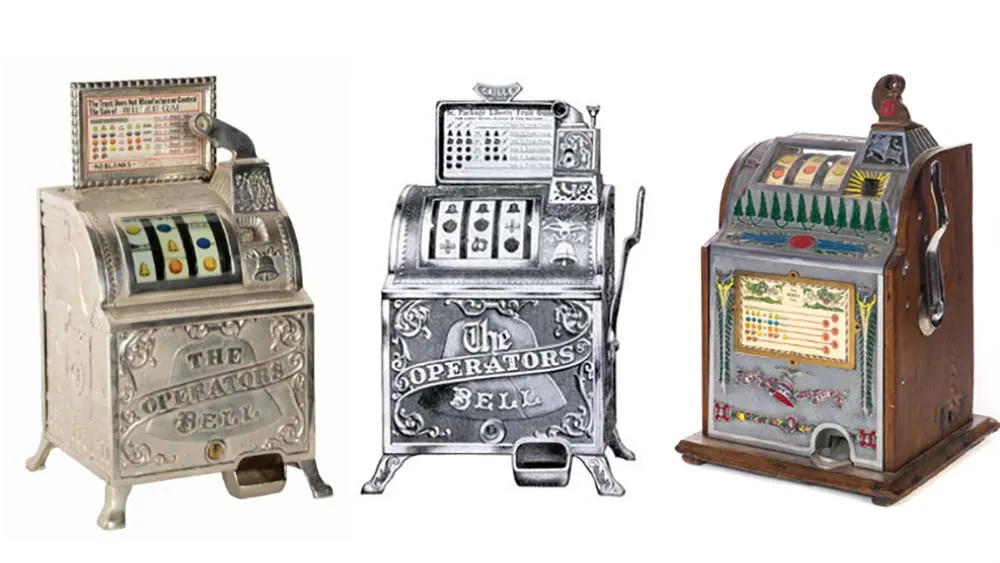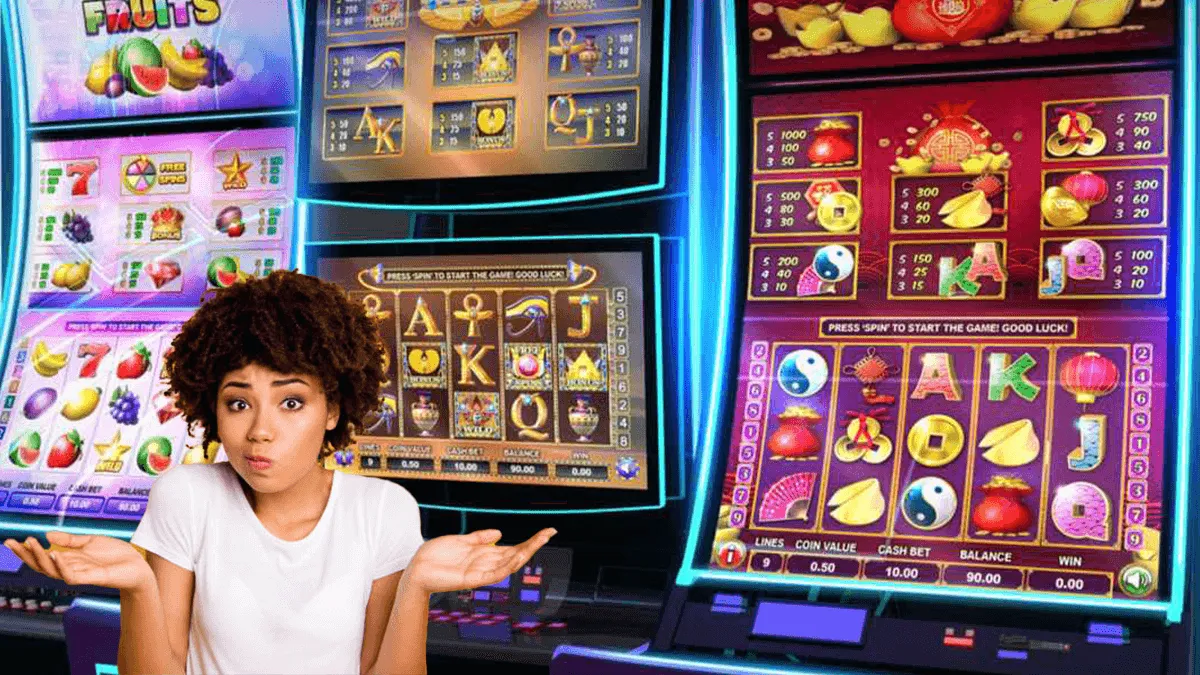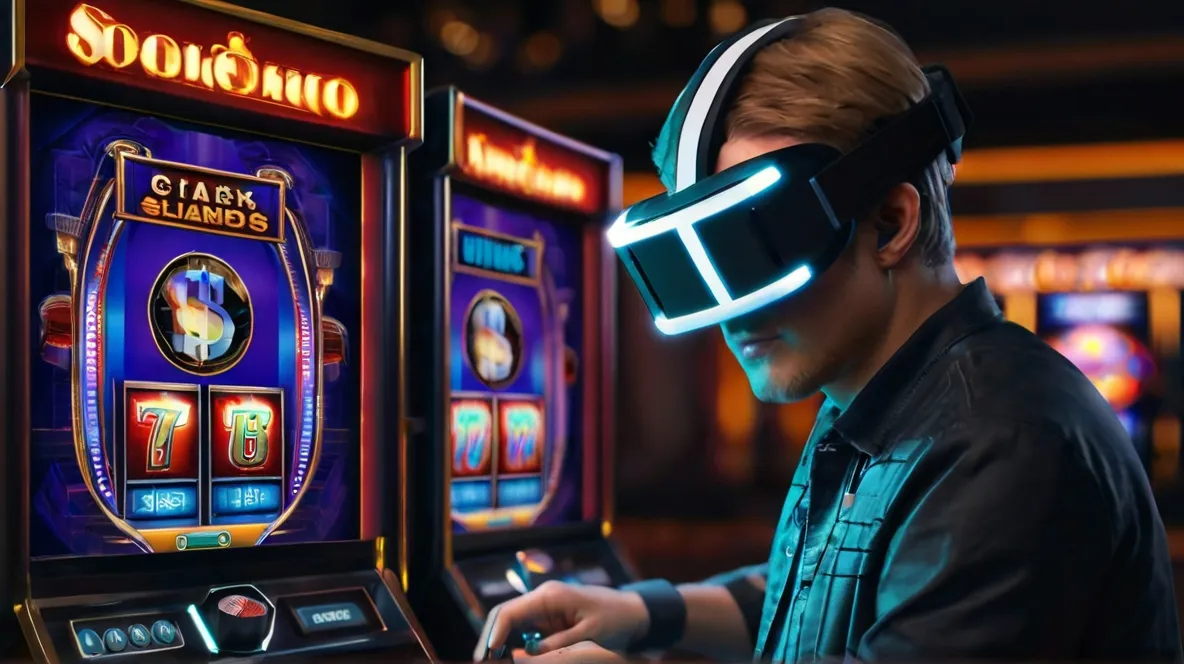
The Inner Workings of Slots Understanding the Mechanics Behind Your Favorite Casino Games
Slot machines are a staple in casinos all over the world. Whether you’re playing at a brick and mortar casino or online, slots offer an exciting and potentially lucrative gaming experience. But have you ever wondered about the inner workings of these seemingly simple games? What makes them tick and how do they determine the outcomes? In this article, we will delve into the world of slots and uncover the secrets behind their mechanics.
The History of Slot Machines

Before we can understand the inner workings of slots, it’s important to know their history. The first slot machine was invented in 1891 by Sittman and Pitt in New York. This early version of the game had five drums with 50 card faces and was based on poker hands. Players would insert a nickel and pull a lever to spin the drums. Prizes were given to players who landed winning poker combinations.
In 1895, Charles Fey created the first three-reel slot machine called the Liberty Bell. This machine featured the iconic symbols of horseshoes, spades, hearts, diamonds, and a liberty bell. The bell symbol became so synonymous with slots that many machines today still include it.
As technology advanced, slot machines also evolved. The first electric slot machine was introduced in 1963 and video slots made their debut in the 1970s. In the 1990s, online slots emerged and continue to be a popular form of entertainment for players worldwide.
How Slot Machines Work
Now that we have a brief history of slot machines, let’s dive into their inner workings. At its core, a slot machine is a computer program designed to generate random outcomes. The outcome of each spin is determined by a mathematical algorithm called a Random Number Generator (RNG). This ensures that every spin is completely random and not influenced by previous or future spins.
The Random Number Generator (RNG)
The RNG is the backbone of slot machines, as it determines the outcome of each spin. It works by constantly generating random numbers, even when the machine is not in use. These numbers correspond to different symbols on the reels. When a player presses the spin button, the RNG stops at a specific number, and that number determines the symbols that will appear on the reels.
The RNG is constantly cycling through thousands of numbers per second, making it virtually impossible to predict the outcome of any given spin. This makes slots a game of chance, where luck is the determining factor.
The Reels
The reels of a slot machine are the spinning cylinders that display the game’s symbols. In traditional slot machines, the reels were physical objects that would spin when the lever was pulled or the spin button pushed. However, with the rise of video slots, the reels are now virtual and displayed on a screen.
Most modern slot machines have five reels, but there are games with three, seven, or more reels. Each reel contains a set number of symbols, ranging from 10 to hundreds, depending on the game. These symbols can be anything from fruits and diamonds to popular movie characters and TV shows.
Paylines
Paylines are the lines on which winning combinations can be formed. In traditional slot machines, paylines were fixed, meaning players couldn’t adjust them. However, with online slots, players have the option to select how many paylines they want to activate per spin.
Some slot machines have a single payline, while others can have up to 100 or more. The more paylines you activate, the higher your chances of landing a winning combination.
Payouts and Payout Percentages
Payouts refer to the amount of money a player receives for a winning combination. Different symbols have different values, and the payout for each combination is determined by the game’s paytable.
Payout percentage, also known as return to player (RTP), is the amount of money a slot machine pays out over time. This is usually expressed as a percentage and can range from 80% to 99%. For example, if a slot machine has an RTP of 95%, it means that for every $100 wagered, the machine will pay out $95 in winnings. The remaining $5 is the casino’s profit or house edge.
Types of Slot Machines

There are various types of slot machines, each with its unique features and gameplay. Let’s take a look at some of the most popular types of slots.
Classic Slots
Classic slots, also known as traditional or three-reel slots, are reminiscent of the early slot machines. They typically feature three reels and a single payline, and their symbols are usually fruits, bars, and lucky sevens. These games tend to have lower payouts and fewer bonus features compared to other types of slots.
Video Slots
Video slots are modern versions of slot machines that use computer graphics and animations to display the game’s reels and symbols. They offer a more immersive gaming experience and often come with bonus rounds, free spins, and multipliers. Video slots also have multiple paylines, giving players more chances to win.
Progressive Jackpot Slots
Progressive jackpot slots are a type of slot machine where the jackpot increases every time a player places a bet. A small portion of each bet goes towards the jackpot, which can accumulate to millions of dollars. These games usually have higher minimum bets, but the potential for massive payouts makes them popular among players.
Branded Slots
Branded slots are based on popular movies, TV shows, or celebrities. They feature familiar characters and themes that attract fans of the original source material. Branded slots often come with unique bonus features and impressive graphics to enhance the player’s experience.
The Slot Machine Design Process
Designing a slot machine is a complex process that involves various elements, including game mechanics, graphics, and sound effects. Let’s take a closer look at each of these aspects and how they come together to create a slot machine.
Game Mechanics
Game mechanics refer to the rules and gameplay of a slot machine. This includes the number of reels, paylines, symbols, and bonus features. Designers must consider the target audience and what will appeal to them when creating the game mechanics.
For example, a classic slot machine with simple gameplay may be more appealing to older generations, while video slots with immersive graphics and bonus rounds may attract younger players.
Graphics and Themes
The visual aspect of a slot machine is crucial in attracting players. The graphics should be eye-catching, and the theme should be engaging enough to keep players entertained. Many slot machines today use 3D graphics and animations to enhance the gaming experience.
Choosing the right theme is also important as it can determine the success of a slot machine. Popular themes include adventure, history, fantasy, and mythology.
Sound Effects
Sound effects play an essential role in creating an immersive gaming experience. They can range from simple background music to elaborate sound effects that accompany winning combinations or bonus features. Sound effects add another layer of excitement and engagement to the game and help immerse players in the theme.
Tips for Playing Slots
While slots are a game of chance, there are some strategies and tips that players can follow to maximize their chances of winning.
- Read the paytable: Before playing a new slot machine, take a few minutes to read the game’s paytable. This will give you an understanding of the payout structure and the value of each symbol.
- Set a budget: It’s essential to have a budget in mind when playing slots. Set a limit on how much you’re willing to spend and stick to it. This will prevent you from overspending and potentially losing more than you can afford.
- Play max bet: Many slot machines offer a higher payout for players who bet the maximum amount. If you have the bankroll, consider playing max bet to maximize your potential winnings.
- Take advantage of bonuses: Online casinos often offer bonuses and promotions for slot players. These can include free spins or bonus funds, giving you more chances to win without spending extra money.
- Know when to walk away: It’s easy to get caught up in the excitement of playing slots, especially when you’re on a winning streak. However, it’s essential to know when to stop and walk away. Set a winning goal and stick to it, and don’t chase your losses.
The Future of Slot Machines

As technology continues to advance, so does the world of slot machines. Here are some trends and innovations we can expect to see in the future.
- Virtual Reality Slots: Virtual reality (VR) is becoming increasingly popular, and we can expect to see VR technology incorporated into slot machines soon. This will give players a more immersive and interactive gaming experience.
- Skill-Based Slots: Unlike traditional slot machines that rely solely on luck, skill-based slots require players to use their skills to win. These games could attract a new generation of players who prefer more control over the outcome of their bets.
- Crypto Slots: With the rise of cryptocurrencies, we may see an increase in slot machines that accept digital currencies. This could also pave the way for blockchain-based slot machines, offering players more transparency and security.
Conclusion
Slot machines have come a long way since their invention in the late 19th century. Today, they are a popular form of entertainment for casino-goers and online players alike. Understanding the inner workings of slots, including the RNG, reels, and payouts, can give players a better appreciation of the game.
While slots are a game of chance, there are some strategies and tips that players can follow to maximize their chances of winning. As technology advances, we can expect to see new innovations and trends in the world of slot machines, making them even more exciting and engaging for players. Whether you’re a seasoned player or new to slots, knowing how they work can enhance your overall gaming experience.
